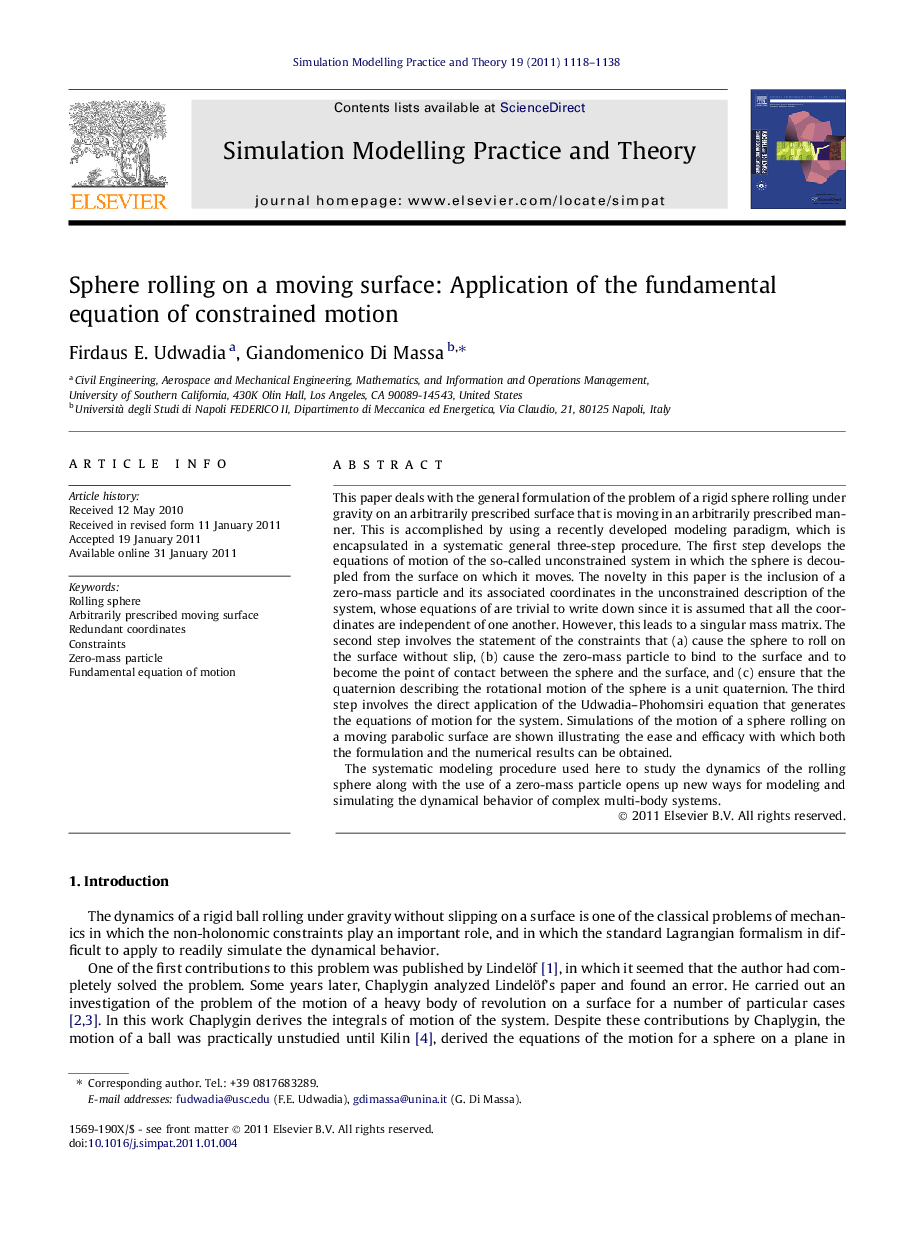| Article ID | Journal | Published Year | Pages | File Type |
|---|---|---|---|---|
| 492346 | Simulation Modelling Practice and Theory | 2011 | 21 Pages |
This paper deals with the general formulation of the problem of a rigid sphere rolling under gravity on an arbitrarily prescribed surface that is moving in an arbitrarily prescribed manner. This is accomplished by using a recently developed modeling paradigm, which is encapsulated in a systematic general three-step procedure. The first step develops the equations of motion of the so-called unconstrained system in which the sphere is decoupled from the surface on which it moves. The novelty in this paper is the inclusion of a zero-mass particle and its associated coordinates in the unconstrained description of the system, whose equations of are trivial to write down since it is assumed that all the coordinates are independent of one another. However, this leads to a singular mass matrix. The second step involves the statement of the constraints that (a) cause the sphere to roll on the surface without slip, (b) cause the zero-mass particle to bind to the surface and to become the point of contact between the sphere and the surface, and (c) ensure that the quaternion describing the rotational motion of the sphere is a unit quaternion. The third step involves the direct application of the Udwadia–Phohomsiri equation that generates the equations of motion for the system. Simulations of the motion of a sphere rolling on a moving parabolic surface are shown illustrating the ease and efficacy with which both the formulation and the numerical results can be obtained.The systematic modeling procedure used here to study the dynamics of the rolling sphere along with the use of a zero-mass particle opens up new ways for modeling and simulating the dynamical behavior of complex multi-body systems.
